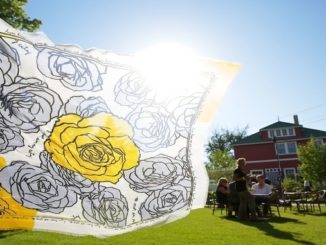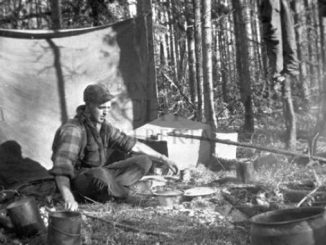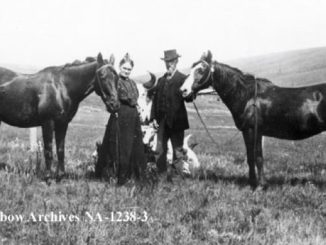“If you throw your hat and it doesn’t come within twenty feet of a dinosaur bone, then you’re not in Dinosaur Provincial Park.”
~Anonymous Visitor to Dinosaur Provincial Park
Dinosaur Provincial Park was established back in 1955, which coincided with Alberta’s 50th Jubilee celebration, and was awarded UNESCO World Heritage Site designation in 1979 to help protect the fossils located there. The park contains the largest and most comprehensive fossil collection from the late Cretaceous period in the world and is ranked fourth globally in terms of richest fossil deposits overall. More than fifty different dinosaur species have been unearthed and over 500 specimens have been removed and showcased in museums across the planet.

A large chunk of the park is classified as a Natural Preserve, meaning it’s off-limits to the public unless accompanied by a guide. Thankfully, the park offers various tours and expeditions into the restricted area, which allows visitors a comprehensive look at what makes the park truly special. One such tour is the Guided Excavation program, where participants are immersed in an actual scientific study and are given the opportunity to dig for real dinosaur bones and other fossils. As an Alberta Parks Ambassador, I had the opportunity to take part in this program several years ago, but the experience is still fresh in my mind. That was also where I met David Lloyd, who is the Guided Excavation Coordinator and just happens to be the latest interviewee for my Wild Jobs series.
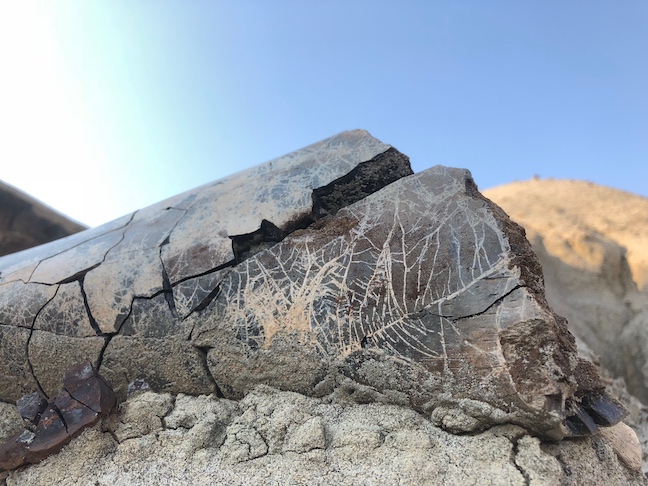
This past summer marked David’s ninth season working at Dinosaur Provincial Park. Due to COVID-19 health guidelines, the Guided Excavation program and Fossil Prospecting tours were put on hiatus for the season, but will hopefully return next summer. David stayed busy working as a natural history interpreter and was part of the team running the programs that were easily modified to ensure everyone’s safety. David’s here to talk about his career, the Guided Excavation program, and why Dinosaur Provincial Park is one of his favourite places in the world.
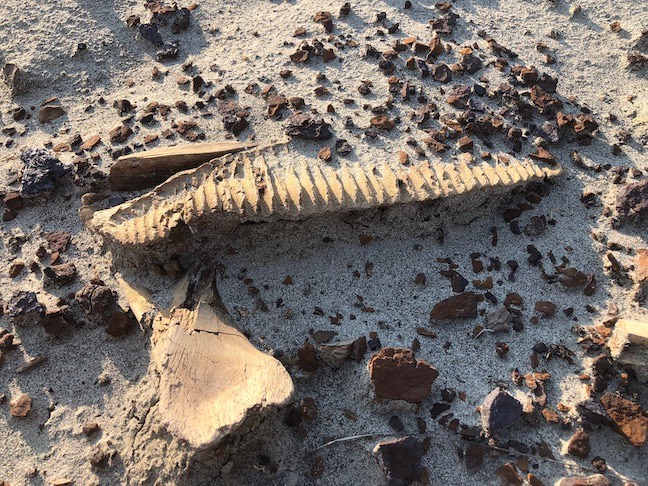
Calgary Guardian: “What type of education and/or training do you need for your job?”
David Lloyd: “I have a Bachelor of Science degree in earth science/zoology with an emphasis on palaeontology, which is a four year degree. I spent about thirteen years working as a technician in various roles at the Royal Tyrrell Museum of Palaeontology. This included working in a number of dinosaur bonebeds in southern Alberta, which provided me with a solid background in palaeontology, and how to properly document and collect fossils from a dinosaur bonebed.”
CG: “Why did you want to work at Dinosaur Provincial Park?”
DL: “Dinosaur Provincial Park is an incredible place. The landscape is so unique compared with most other places in the province. Sometimes Dinosaur Provincial Park can seem otherworldly. There is also an incredible diversity of fossils that can be found here. It is one of my favourite places on the planet!”
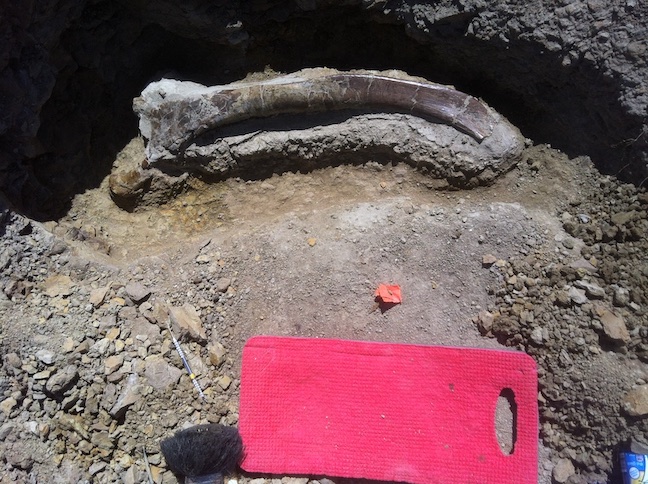
CG: “What’s the best thing about your job?”
DL: “I love taking people to explore the badlands, and providing them with the opportunity to discover fossils and connect with the landscape.”
CG: “What’s one of the most challenging aspects of your career?”
DL: “One of the most challenging aspects can be dealing with the weather. If it is too wet out from rain, then we have to cancel the Guided Excavation program. When the mudstone gets wet, it is really slippery. Wet ground can also make it difficult to see the fossils. One time I was out with a group at Bonebed 30 and a small cloud passed over. It started to sprinkle, but it wasn’t going to be enough rain to make the bonebed unsafe. As the ground got just a little bit wet, all of a sudden there was no contrast between the colour of the bones that we were excavating and the surrounding sediment, so it was as if the bones just disappeared. We took a short break and waited for the cloud to pass so the ground could dry. Once the ground dried up, it was really easy to see the bones again and resume our excavations. The heat can be a challenge too. One of the positives for dealing with the heat is that we are outside as the day warms up, so it isn’t too much of a shock to the system going from air conditioning to 40 degrees Celsius. Sometimes it does get too hot out and we have to modify the schedule for the day.”
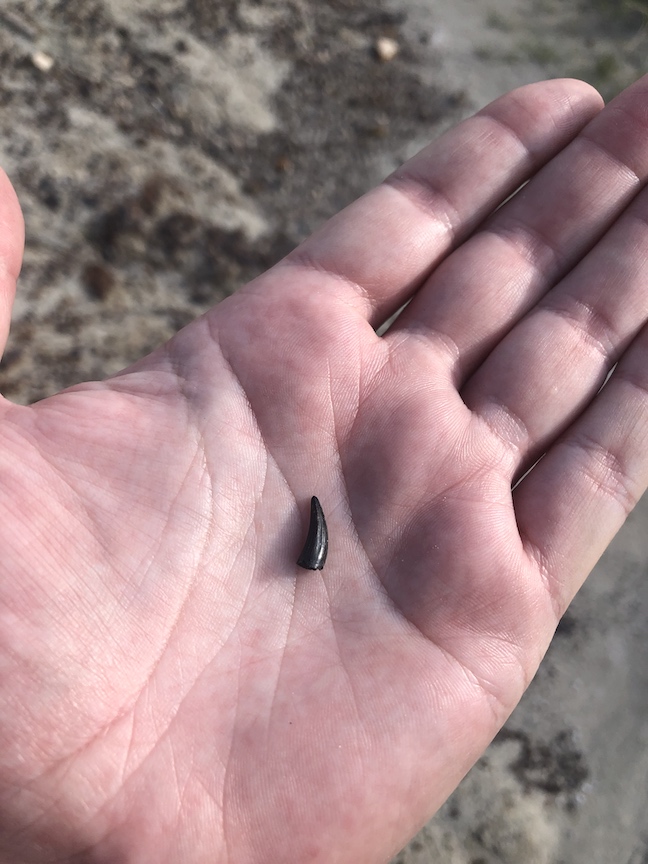
CG: “What’s it like working on a fossil excavation? Have you found anything really exciting?”
DL: “I have worked on fossil excavations since 2005, mainly in southern Alberta, but I also went to Mongolia in 2010. The fieldwork in southern Alberta has mainly been while working as a technician at the Royal Tyrrell Museum of Palaeontology and as the Guided Excavation Coordinator for Dinosaur Provincial Park. In each of the summers of 2006 through 2019 I spent some of my days off volunteering with a research crew from the Royal Ontario Museum that is working on palaeontological research projects in southern Alberta. Palaeontological fieldwork is a lot of hard, detail-oriented work. It is the best when you are working with a good team because you can still have some fun, even though you are working hard. It is incredible to think about how these fossils that you are uncovering have never been seen before by human eyes. As you can see from some of my photos, there are a lot of cool fossils to find while exploring the badlands of Dinosaur Provincial Park as well.
CG: “I’m not asking you to give away any of your secret spots, but do you have a favourite place in the park? What makes it so special?”
DL: “A couple spots spring readily to mind for favourite places in the park. The Valley of the Moon is a fairly flat area that faces west and can have some really spectacular sunset views. It is also a location that we have used for night sky programs during the Perseid meteor shower since it offers a wide open view of the sky. Phred the Camel is one of the famous landmarks in the park and is good day or night. We have also run night sky programs during the Perseid meteor shower here. There are lots of really cool places throughout the park and I love exploring the landscape.”

CG: “I’m sure there’s no such thing as a ‘normal’ day in your profession, but could you give me an idea of what a regular day might look like?”
DL: “The one-day Guided Excavation program is a seven hour program running from 9 a.m. to 4 p.m. I usually start work at 8 a.m. when I’m running that program. I pick up lunches from the café – we eat lunch on site at the bonebed. I prepare the safety talk paperwork because we do a safety talk before we leave the visitor centre so all participants know the plan for the day and any potential hazards that might be encountered. I meet the guests at 9 a.m. at the front of the Visitor Centre and we do a short tour of the lab. I show them the composite map that I compiled using the one-metre-square grid maps that are used in mapping the location of the fossils in the bonebed. When working in a bonebed, we map the locations of the individual bones because where the bones are and how they are arranged in the ground is important information. The composite map includes all of the individual maps that were created during the Guided Excavation program with help of the public participants. I also point out any field jackets of fossils that have been collected so far if there are any in the lab. After the lab tour, we go into the gallery and talk about the differences between the two major groups of ceratopsians: centrosaurines and chasmosaurines. There is a cast skeleton of a Chasmosaurus in the gallery. There isn’t a Centrosaurus on display, but there is the skull of a Styracosaurus (a close relative of Centrosaurus). The Styracosaurus skull is one that I spent about 14 months preparing (cleaning away the rock and gluing pieces back together) while working as a fossil preparator at the Royal Tyrrell Museum.
After the Visitor Centre, we head into the natural preserve, making a stop along the way to have a short walk for an introduction to the geology of Dinosaur Provincial Park. Next we drive to the parking spot near the bonebed and hike down to Bonebed 30.
Bonebed 30 is one of over twenty Centrosaurus bonebeds in Dinosaur Provincial Park. It was first excavated by the Royal Tyrrell Museum and their field experience program in 1995 and has been used for the Guided Excavation program from 2009 through 2019.
After arriving at the bonebed, I give a brief tour of the site, pointing out bones that are being worked on. Then I pass out the tools and set people to work excavating fossils after a brief orientation on the correct way to excavate a fossil. For the rest of the morning I assist people with their excavation work and answer questions. Depending on what stage we are at with excavating, there may also be the opportunity to map the locations of the fossils relative to the map grid that we have set up for the bonebed, make field jackets, or collect fossils in field jackets to bring back to the lab at the Visitor Centre when we return.
There is a picnic table at the site where we eat lunch. The table has interesting fossils, rocks, and modern bone that have been picked up off the surface outside of the bonebed area that we would talk about at lunch. We also continue the discussion about the geology of the park and how this and other Centrosaurus bonebeds in Dinosaur Provincial Park formed.
After lunch we take a short walk to a microsite (an accumulation of smaller fossils and pieces of fossil bone smaller than the palm of your hand that are weathering out of the sediment). At a microsite, you can find teeth, claws, turtle shell, crocodile bone, fish scales and vertebrae, and other small fossils that offer insight into what other animals were living in the area when the dinosaurs were roaming this area about 75 million years ago during the late Cretaceous. Then we resume the work of the morning; excavating, mapping, making field jackets, as applicable.
As time allows at the end of the day, we might make one or two stops on our way out of the preserve to talk more about the geology and palaeontological history of Dinosaur Provincial Park.

CG: “In your opinion, why should folks visit Dinosaur Provincial Park? What sets it apart from the rest of the parks in the Alberta Parks system?”
DL: “Dinosaur Provincial Park seems like it is a unique and hidden gem in southern Alberta. Visitors often comment that it is hard to believe that they are still in Alberta, or even still on Earth. More people are starting to discover the park as they look for places to explore closer to home, and that’s great! Because much of the park is natural preserve where people aren’t allowed to go unless they are on one of our guided interpretive programs, there are many places where very few people have set foot before. There aren’t any other places in Alberta where you can find such an abundance of fossils. Even in the public areas of the park there is the opportunity to follow in the footsteps of dinosaurs and find fossils. There are also many places where you can connect with the landscape.”

Even without the Guided Excavation program running this year, I know that David still had an incredibly busy summer season, and it hasn’t slowed down much this fall. With all of that going on, he managed to carve out some time to thoroughly answer all of my questions, and for that I am very grateful. Thank you for taking the time to make this story possible David.
If you’d like to see more of David’s incredible photography, please visit this Flickr album where he has been documenting changes to Bonebed 30 over the years. The gallery is also filled with spectacular landscape photos, wildlife encounters, fossil prospecting hikes, and more than a few surprises from Dinosaur Provincial Park. Finally, make sure you review the Dinosaur Provincial Park website for information related to the Guided Excavation program, as well as their other interpretive tours and events.

If you’re interested in more dinosaur and badlands-related content feel free to explore these previous posts: Break Bad(lands), Jurassic Province, Discovering the Devil’s Coulee, and Historical Photos from Drumheller and the Badlands. You can also read about my own Guided Excavation experience by visiting this blog post.
***
About this column:
Wild Jobs is a running series that focuses on people in outdoor-related professions. It provides a brief snapshot of their career and the duties that it entails. Please see my previous post, Wild Jobs: Mountain Bike Instructor & Guide to learn more.


